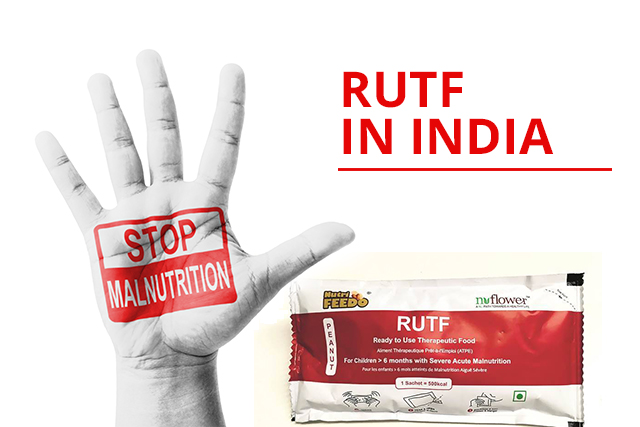Malnutrition is one of the most urgent and complex global complications that needs attention. Large-scale manufacturing of RUTF has saved millions of lives across the globe and has become the need of the hour in addressing all forms of malnutrition. UNICEF procures RUTF from suppliers across the globe, mainly RUTF manufacturers in India and other countries.
RUTF is an energy-dense micronutrient paste that has proven its efficacy in the fight against moderate and severe malnutrition in children. The therapeutic paste is nothing short of a wonder food treating millions of children across the globe threatened by wasting – a dangerous form of malnutrition.
UNICEF procures and distributes an estimated 75-80 percent of the world’s RUTF supply.
Ready-to-use Therapeutic Food as the name suggests is a therapeutic paste that supplements nutrition in underweight and malnourished children, giving them a better chance at restoring a normal life. Most countries do not include RUTF in their essential commodity category, as a result of which world organizations like UNICEF work with the governments to provide vulnerable children with RUTF based treatment plans.
Ready-to-use therapeutic food (RUTF) is typically made by mixing together a combination roasted peanuts, milk powder, sugar, and micronutrient powders. The specific ingredients and proportions may vary depending on the specific formulation of the RUTF.
The manufacturing process for RUTF typically involves 5 steps
Sourcing ingredients: The ingredients for RUTF are typically sourced from suppliers who meet quality and safety standards. India is one of the leading peanut producers in the world and with its efficient supply chain and RUTF manufacturing units is able to churn out a substantial production of RUTF that can save millions of lives. In addition to peanuts, other key ingredients are also carefully sourced to make high quality RUTF paste.
Mixing ingredients: The ingredients are mixed together in a large mixer where similar equipment to create a homogenous mixture. The facility needed for manufacturing this paste is similar to those used by peanut butter manufacturers.
Forming the paste: The mixture is then emulsified and made into a dense nutrient-rich paste using machinery that brings it to the perfect consistency.
Packaging: The paste or bar is then packaged in a way that is designed to be easy to store, transport, and open. The paste needs to be packaged in a way wherein its shelf life is 2 years – a standard protocol for RUTF.
Quality control: Since the paste is intended for children’s consumption, the finished product undergoes stringent testing to ensure that it meets required quality and safety standards.
UNICEF partners with manufacturers of RUTF to solve for malnutrition. While many countries in the world do not have the provision to manufacture RUTF, certain countries like India have the raw materials, processes, manufacturing units and man power to execute large scale production of RUTF.

